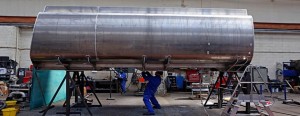
MANILA, Philippines – Due to the adverse effects of El Niño and continued weakening of demand from China, the manufacturing sector slightly declined in October 2015, but is expected to recover in the coming months and years ahead, according to the National Economic and Development Authority (NEDA).
In the Philippine Statistics Authority’s Monthly Integrated Survey of Selected Industries for September 2015, the manufacturing sector’s Volume of Production Index decreased by 1.8 percent while its Value of Production Index continued to fall at 9.2 percent from its drop of 4.8 percent in September 2015.
“For the months and years ahead, the government expects the manufacturing sector to exhibit stronger growth,” said Economic Planning Secretary, Arsenio M. Balisacan. “But for this holiday season, driven by strong domestic demand, business firms are expected to increase production output in anticipation of brisker business activities. This will translate to higher volume of sales and possible expansion of businesses and new product lines.”
Meanwhile, the Volume of Net Sales Index (VoNSI) and Value of Net Sales Index (VaNSI) posted steep declines of -5.8 percent and -12.9 percent respectively.
For consumer goods, tobacco grew vigorously, posting triple-digit growth rates for the first time in net sales, following the implementation of tax stamps. Tobacco grew by 129.2 percent in volume and 131.3 percent in value of production. It also boasted double-digit growth rates in net sales, growing by 12.3 percent growth in volume and 13.4 percent in value.
In contrast, the food subsector continued to decline in both value and volume of net sales due to the persisting dry spell brought about by the El Niño and the devastation brought about by typhoons “Egay”, “Ineng” and “Lando”.
For intermediate goods, net sales of wood and wood products continued to increase by 34.1 percent in volume and 10.1 percent in value, though construction-related materials declined, with the declining number of non-residential construction permits from July to September.
On the other hand, petroleum sustained its decline, dropping by 11.3 percent in value and 27.9 percent in volume of net sales, due to oversupply from the United States and Organization of Petroleum Exporting Countries (OPEC) while global demand remains weak.
For capital goods, basic metals grew by 17.1 percent in volume and 4.9 percent in value of net sales. This is attributed to the strong performance of non-ferrous materials, which outweighed further contractions in iron and steel brought about by slowdown in real estate activities in China.
Similarly, transport equipment continued to grow by 6.9 percent in both volume and value of production due to the increasing sales of commercial and passenger vehicles with reports from the Chamber of Automotive Manufacturers’ of the Philippines (CAMPI), declaring that their overall sales has been experiencing double-digit growth consecutively for 10 months.
“To support brisk economic activity for the coming months and years ahead, government must continue to invest in infrastructure and logistics support to minimize barriers to the smooth flow of goods,” said Balisacan, who is also the NEDA Director-General.
He added that the manufacturing sector must aggressively pursue innovation to remain competitive in the domestic market while maintaining global presence to offset large losses from the economic slowdown in China.
“More importantly, we need to ensure the full completion and implementation of the Comprehensive National Industrial Strategy to strengthen the linkages across all production sectors, which will sustain growth and resiliency of the economy despite external and internal shocks,” Balisacan added.











Leave a Reply